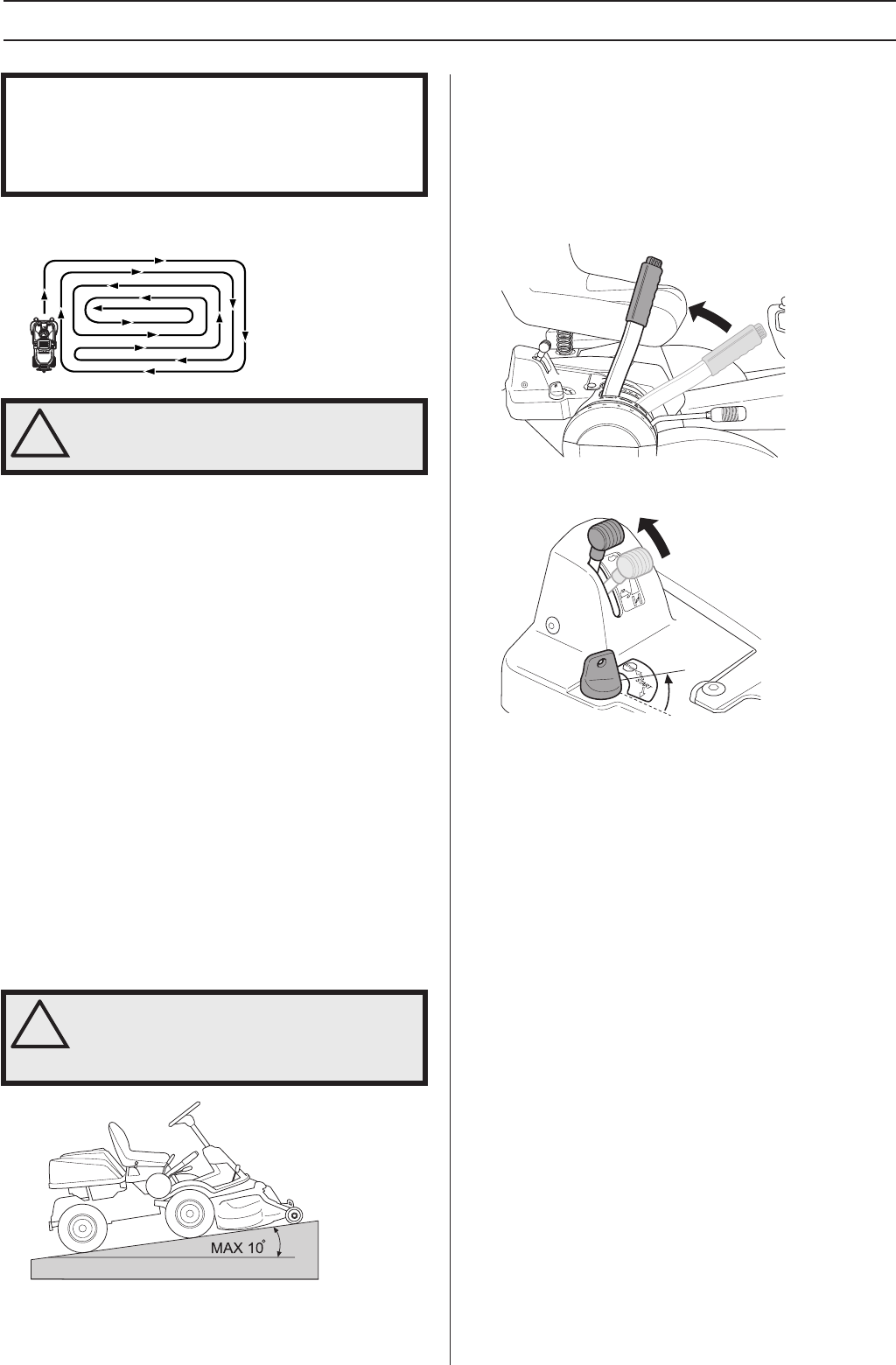
English – 17
Driving
Cutting tips
• Localise and mark stones and other fixed objects to avoid
collision.
• Start with a high cutting height and reduce down until the
required mowing results are obtained.
• The mowing results are best with a high engine speed
(fast rotating blades) and low driving speed (slow moving
machine). If the grass is not too high and thick, the driving
speed can be increased without noticeably depreciating
the mowing result.
• The best lawns are achieved if the grass is cut often.
Mowing becomes more uniform and the grass cuttings
become more evenly distributed over the surface. The
total time consumption is not greater since it is possible to
select a higher driving speed without inferior mowing
results.
• Avoid mowing a wet lawn. The mowing results are inferior
since the wheels sink down into the soft lawn.
• Hose down the cutting unit with water underneath each
time it is used. The cutting unit should then be put in the
service position.
• When the BioClip function is used, it is very important that
the mowing interval is not too long.
Stop the engine
Preferably allow the engine to idle for a minute to obtain
normal working temperature before stopping it if it has been
working hard. Avoid idling the engine for long periods, as
there is a risk of carbon build-up on the spark plugs.
1 Lift up the cutting unit by pulling the lever backwards to its
locked position.
2 Move the throttle control to the MIN. position. Turn the
ignition key to the ”STOP”.
3 When the Rider is at a standstill, press down the parking
brake and push in the locking button.
IMPORTANT INFORMATION
The life span of the drive belts is increased significantly if
the engine runs at a low speed when the blades are
engaged. Therefore apply full throttle first when the cutting
unit has been moved to the mowing position.
!
WARNING! Clear the lawn from stones and
other objects which can be thrown out by
the blades.
!
WARNING! Do not use the machine on
ground that slopes more than 10
°°
°°
..
..
Mow
slopes upwards and downwards, never
across. Avoid sudden changes in direction.


















